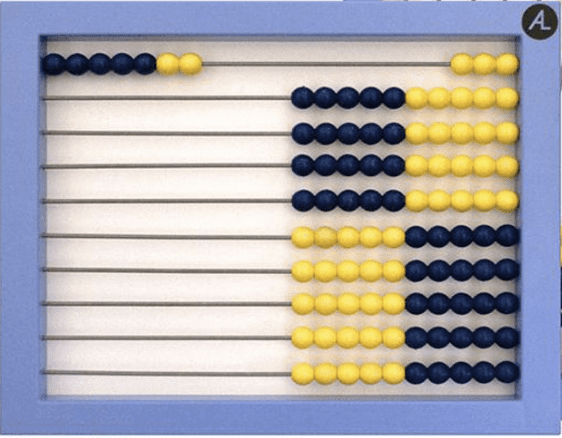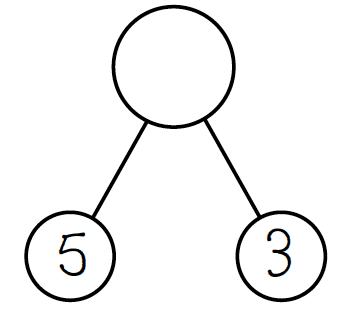RightStart Math uses evidence-based instructional models that are proven effective when teaching math. These strategies benefit all learners, including strong students and students with learning differences.
Here are some ways RightStart Math does this:
Visual Representation

One powerful evidence-based strategy is visual representation. RightStart Math uses a variety of manipulatives to help students visualize math. One of the most effective manipulatives used in the curriculum is the Cotter Abacus. The Cotter Abacus helps students understand that numbers are quantities, help them subitize and visualize these quantities, and enable them to develop fluency in math facts and processes.
Students with learning differences tend to struggle with memorization. However, when a student applies the Cotter Abacus and other visual representation models in the learning process, the abstract elements of math become concrete, increasing understanding. In addition, many children with learning differences can mentally visualize quantities and strategies, increasing math fact fluency and reducing the need for rote memorization.
Schema-Based Instruction
RightStart Math provides schema-based instruction for word problems. Students learn to think about the problem and utilize strategies and tools, such as the part-whole circle set, to break apart the problem, leading them to discover which operation to use.
Take a look at this example:
Robin had 5 pennies and found 3 more pennies. How many pennies does Robin have now?
The students use the part-whole circle set and fill in the information they know. Robin has 5 pennies and gets 3 more.

Five and three are part of the whole. So, how can they find the whole amount? They need to add.

The part-whole circle set is only one of the many tools and strategies RightStart Math uses to help students think about the problem and solve it.
Metacognitive Strategies
Metacognitive strategies, or memorable approaches and strategies, are used throughout the RightStart Math curriculum and tutoring programs to help students think about and learn facts, processes, and problem-solving procedures.
A few of the many strategies taught and used through RightStart Math are:
- Two Fives Strategy
- Complete the Ten
- Going Up
- Taking Part from Ten
- Taking All from Ten
- Distributive Property in Multiplication
RightStart Math incorporates these strategies and more throughout the curriculum to help students think about how to solve problems efficiently.
Summary
RightStart Math’s evidence-based instruction is used worldwide to help students understand, apply, and enjoy math! If you would like to know how to get RightStart Math into your school, contact us.
